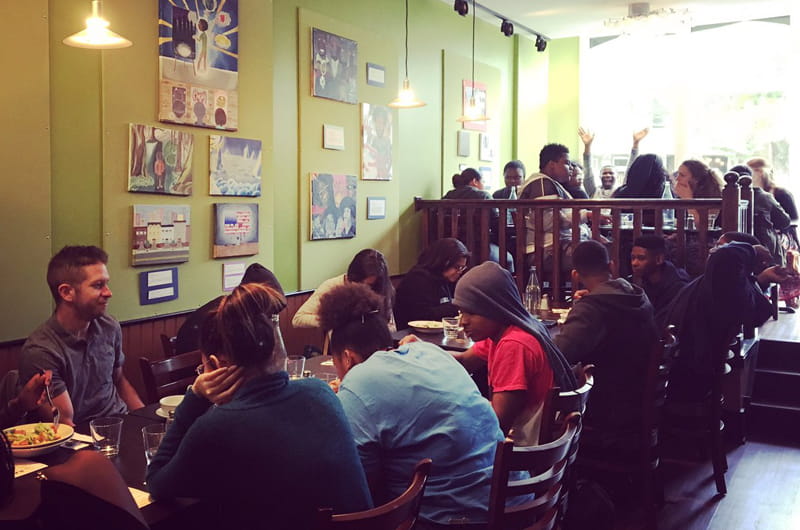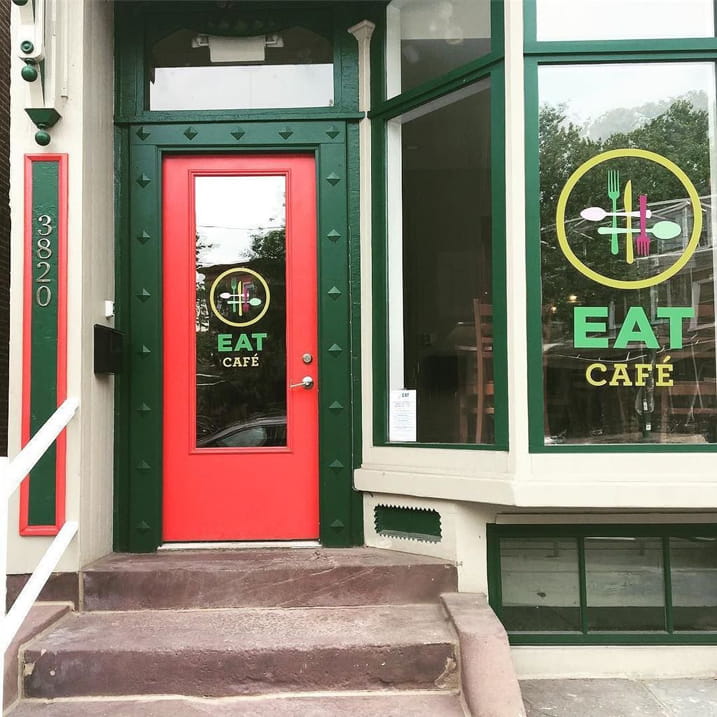Philadelphia’s First Pay-What-You-Can Restaurant Celebrates First Year
 By Frank Otto
By Frank Otto

A place that some thought might be “too good to be true” will mark its first anniversary Thursday evening.
Opened Oct. 26, 2016, the EAT (Everyone At the Table) Cafe will mark the beginning of its second year Thursday. It will continue its mission of offering delicious food in a pay-what-you-can model to provide an excellent, full-service restaurant experience that welcomes everyone — regardless of their ability to pay.
“I’m grateful to have the opportunity to create a beautiful neighborhood place with outstanding chefs to make a lovely dining experience for everyone,” said Mariana Chilton, PhD, professor in Drexel University’s Dornsife School of Public Health and founding director of the Center for Hunger-Free Communities.
The Café will kick off its second year with an open-house from 5 to 7 p.m., Thursday, Oct. 26, featuring items from its outstanding new menu and acclaimed chefs, Valerie Erwin and Marjorie Felton.

Erwin, who owned the celebrated Geechee Girl, and Felton, 20-year veteran of kitchens who has worked at Weavers Way Co-op, took over the Café in late spring and are finalizing the new international home cooking-style menu. It will feature entrees ranging from North Indian chicken, to curried vegetable cakes, and smoked pork shoulder.
Combining a superb menu with a slick dining room (the Cafe is located in a renovated rowhome building) creates the kind of welcoming atmosphere that has drawn thousands of customers of all backgrounds in the Café’s first year.
“I feel most proud that guests are so impressed with the atmosphere,” Erwin said. “It’s a beautiful space — something that many organizations that serve hungry people don’t have the resources to provide. A beautiful dining room sets the tone for the rest of the meal and, of course, I am proud of the quality of food that Margie and I produce.”
EAT’s menu has suggested prices. Those who dine and pay more than the suggested price invest in the Café and pay for those who are not able to pay the full price. So the more who come and pay more for the excellent food are feeding another diner who could be in the same room with them.

Since its opening, there have been many stories of people getting the boost they need from the EAT Café. There was the Mongolian student whose scholarship funds ran a little short at the end of the month. The young boy who began showing up after school ended for the summer and the free meal programs there became unavailable. And the man living on the street who walked 30 blocks to find out if the Café was actually real.
Chilton said a member of one of the Center for Hunger-Free Communities’ poverty advocacy programs recently gifted them with a photo of her young daughter, smiling and happy after finishing the dessert from her meal.
“Her mom said they had great mother-daughter time and that she was amazed at how beautiful the Café and food are,” Chilton recounted. “That’s what we’re all about — togetherness and good food for all.”

To that point, the Café is a spot that can be used for parties and meetings. It has hosted discussions on race and panels on poverty. But it still is a restaurant, with the hiccups and trials that come with every first-year restaurant.
One change — moving from a fixed-suggested-price three-course meal to a more a-la-carte menu — made a lot of sense because gives diners the options they were asking for — including vegan choices and smaller plates, which helps reduce food waste.
Such decisions keep EAT moving forward to reach its goal of becoming the go-to neighborhood spot that has a lasting, positive influence in the community.
“The Café has the good will of the community and touches everyone who joins in,” Chilton said. “We know it works because people keep coming back. And it’s clear that everyone feels a sense of joy.”
In This Article
Contact
Drexel News is produced by
University Marketing and Communications.
